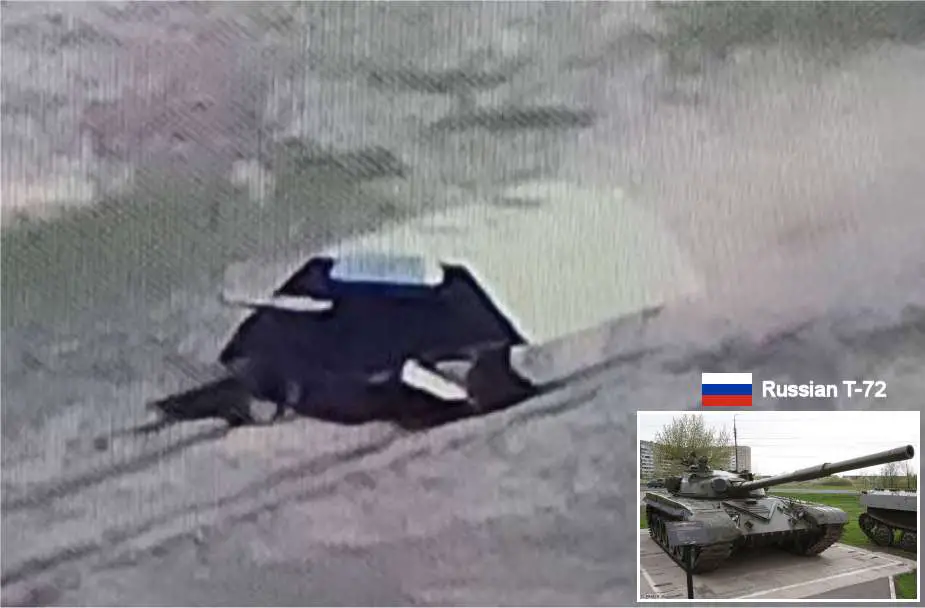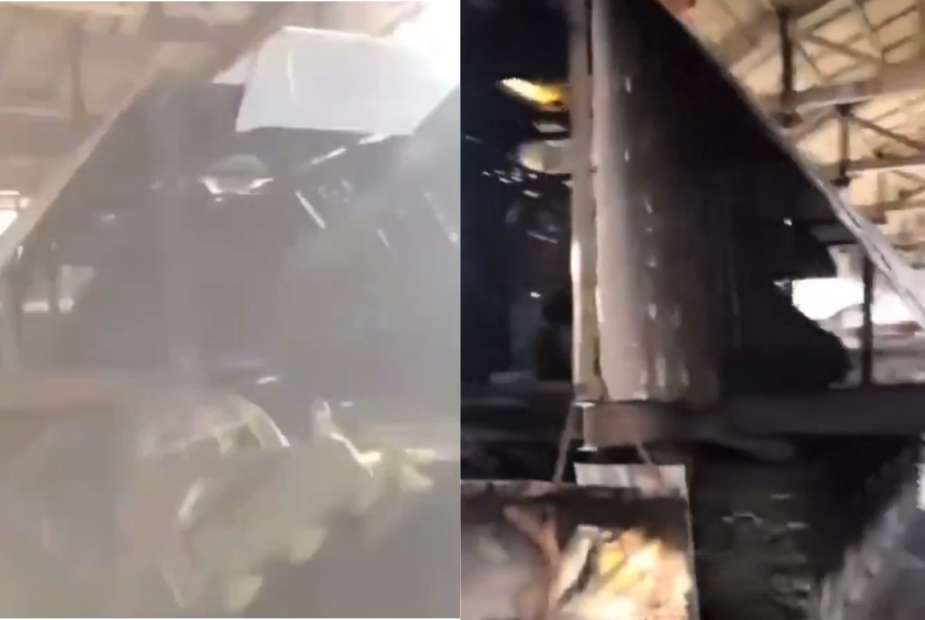- Army
- Conflicts in the world
- Israel - Iran conflict 2025
- Pakistan - India Conflict 2025
- Russia Ukraine War 2022
- Libya conflict day by day
- HAMAS - Israel War 2023
- Operation Serval in Mali French Army
- Sangaris operation Central African Republic
- Sangaris opération militaire République Centreafrique
- Ukraine - Russia conflict
- Syria conflict news
- Defence & Security Industry Technology
- Armies in the world
- Analysis Defense and Security Industry
- Conflicts in the world
- Navy
- Air
Oversized Cage Armor on Russian T-72 Main Battle Tank in Ukraine
On April 9, 2024, social media platforms showcased images of a Russian T-72 main battle tank with a massive drone cage covering almost the entire vehicle, humorously nicknamed the "Iron Mess". This type of armor, known as "cage armor" or "armor cage," consists of a metallic grid structure mounted around the most vulnerable parts of the tank, such as the turret and main body. Its primary function is to prematurely detonate the warheads of anti-tank hollow-charge missiles or intercept various unmanned aerial vehicles (UAVs), thereby reducing their ability to penetrate the tank's main armor.
Follow Army Recognition on Google News at this link

A Russian T-72 with a "Super Cage Armor". (Picture source: Social Media/ Vitaly V.Kuzmin)
Hollow-charge missiles, designed to breach thick armor via a chemical reaction that creates a high-temperature, high-velocity plasma jet, are among the most formidable threats to battle tanks. UAVs have also proven their effectiveness in modern conflicts, such as the Russo-Ukrainian War. The cage armor serves as an initial barrier that neutralizes the missile's warhead before it can reach the main armor, dissipating some of the destructive energy and increasing the tank's chances of survival in combat.
However, the adaptation seen in the photos goes beyond typical enhancements, forming what could be called a "super cage armor." This modification, though, comes with significant disadvantages. The most obvious is the loss of turret mobility, rendering one of the tank’s primary combat features ineffective. Additionally, this cage adds considerable weight to the T-72 and restricts the use of its snorkel, compromising its amphibious capabilities. It also prevents the operation of smoke grenade launchers, further reducing the tank's defensive capabilities. A comprehensive list of the drawbacks of such an excessive system would be lengthy, but these points indicate the lost capabilities due to this type of armor.
The T-72, a main battle tank developed and produced by Russia, is renowned for its durability and presence in numerous national armories worldwide. Equipped with a 125 mm smoothbore cannon, it can engage targets at various ranges with high precision, aided by laser targeting and night vision systems. Normally, it also features two machine guns, 7.62 mm, and 12.7 mm, enhancing its close-combat and anti-personnel capabilities—though, in this case, the mounted machine guns are unusable. Typically, its NBC (nuclear, biological, chemical) protection system and smoke grenade launchers increase crew survivability.
With armor up to 500-600 mm thick, the T-72 provides effective protection against various anti-tank munitions. It can reach 60 km/h on roads and cover distances up to 480 km, extendable to 550 km with additional fuel drums. The tank is also capable of navigating a variety of aquatic obstacles thanks to its fording equipment, showcasing its adaptability in diverse environments.
Weighing 46.5 tons and measuring 9.54 meters in length, 3.59 meters in width, and 2.23 meters in height, the T-72 comfortably accommodates a crew of three. It is used by many countries worldwide, from Algeria to Ukraine, including India and Syria, playing a crucial role in their defense strategies and demonstrating the enduring value of armored combat technology.
While mounting cage armor on tanks is often beneficial, especially with the proliferation of drones in Ukraine, the version observed here sacrifices too many valuable capabilities to be considered a true enhancement. The teams that installed this armor may have overdone the metal plating. Although this addition might have been intended to assign a new role to this tank, the scenario seems overly contrived—frankly, I have already formed my opinion on this adaptation.

A Russian T-72 Main Battle Tank equipped with an oversize cage armor. (Picture source: Social Media)


























